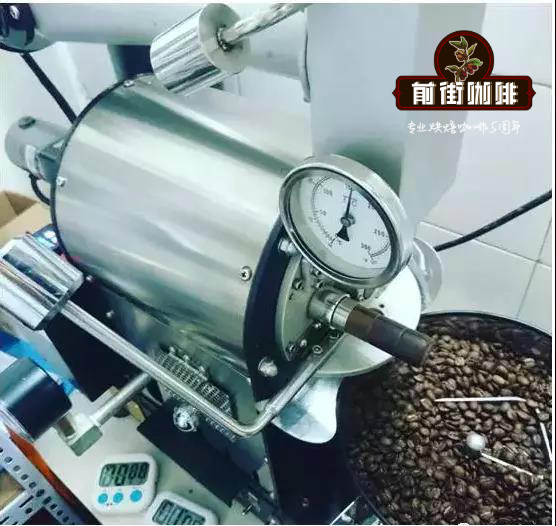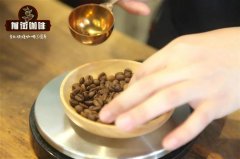What is the basic knowledge of coffee?

What's the point of a good cup of coffee? Good soaking skills and utensils are indispensable, but high-quality coffee beans are the most important element. Do you have no idea about coffee beans, or are you often spoiled by a bunch of coffee names? No matter, in the following article, we will introduce the important knowledge about coffee beans in the most easy-to-understand way.
Only when there are high-quality coffee beans can there be good coffee in Taiwan. Drinking coffee has become an indispensable enjoyment. More and more people choose to buy coffee at home, not only for fun, but also for better coffee products. If you already have, or are planning to do, then the first thing you need to know is: good coffee, high-quality coffee beans.
This is the same as most food. A dish that is not new, no matter how it is cooked, must not be very delicious, but a new dish, steamed with steamed rice, is very delicious. Coffee is the same, poor quality coffee beans, no matter how good brewing skills or utensils can not be saved, it is certain that you can only make bad coffee.
So, what are high-quality coffee beans? Recall that you have had coffee that tastes good in the past. It probably has two characteristics: first, the fragrance is charming, and the second is that it tastes good.
The flavor of coffee comes from coffee roasting.
The aroma and taste of coffee are produced after roasting. In the roasting process, the moisture of the raw coffee beans is slowly released, the weight is low, the color is deepened, the body is swollen, and the oil containing fragrance is slowly released. In addition, raw beans originally contain a large amount of trypsinic acid, the baking process will gradually disappear, the release of good fruit acid, its taste is short and different during baking. You can see the change in the shape of the coffee beans during the roasting process.
Roasting and discoloration of coffee beans
With regard to the roasted coffee, I will talk about it later. What you need to know is that the special flavor of the coffee is roasted, which is related to how to choose the right coffee beans.
Coffee bean V.S. Coffee powder
Coffee bean coffee powder
After deciding to buy your own coffee, the first choice you face when buying your own coffee is to buy coffee beans (whole coffee beans) or ground coffee powder (ground coffee beans). Apart from other personal appliances and time factors, we have only one suggestion: buy coffee beans, buy coffee beans is right.
There is a reason for such a big push, but does it still deserve what we said earlier? The flavor of coffee comes from the roasted oil, which is sealed in the holes in the coffee beans. After grinding, the perfume and oil begin to develop, and the flavor of the coffee coffee is naturally greatly reduced.
In addition, the powder contact with empty noodles increases, easy to be damp or damp. Under the same conditions, coffee beans can be preserved nearly twice as long as coffee powder.
The only good thing about coffee powder is its convenience, especially if you always oversleep in the morning, don't have time to grind coffee slowly, or if you don't have the tools to grind beans, coffee powder allows you to enjoy a cup of coffee quickly. If you decide to buy coffee powder, then we have the following two suggestions: (1) about a few weeks at a time, you may retain the flavor, and (2) keep the coffee powder in a good sealed jar.
Is it numb to grind your own beans? It's really fun and can maintain the taste!
Coffee beans are the most complete form to preserve the flavor of coffee, and to ensure the new and original flavor of coffee. Some merchants will buy coffee from different sources in the same bag of coffee powder, and consumers are sure to protect the source of coffee.
The roasting date of coffee beans represents the degree of freshness, and coffee beans baked within 2-3 days are usually a good choice. However, baking is actually not the best time for beans to taste. In addition to the taste of roasted beans and the taste of beans themselves, coffee beans will continue to release nitrogen dioxide (nitrogen dioxide) about 48 hours after baking, so boiled coffee beans will not taste good.
It is recommended to buy about 2 tons of coffee beans at a time, and coffee beans stored indoors. It is also recommended that coffee beans taste the best and most fragrant at the end of 2 years of use.
The level of quality is not equal to that of quality.
Because it is so cheap, Kuibusta is often mixed with coffee powder on the market to reduce cost. at present, most of the cheap instant coffee on the market is inexpensive, but the quality is not the same as that of tasty coffee. High-quality espressos beans are often used in cold coffee (espressos) because its crema is too thick. A good Busta tastes even better than a bad Arabica bean.
Therefore, the choice between several kinds of coffee beans mainly depends on one's preference. Some people may think that Arabica incense is too heavy, while others like the mellow bitterness of Busta. The only thing we want to remind you is that if you are sensitive to caffeine, you should pay special attention to the amount of caffeine. The caffeine content in Juanbusta is twice as high as that in Arabica.
Of course, these are not the only types of coffee. You can also try other varieties such as Java, Kona and Sumatra to add new flavor to your coffee system.
The steamy taste of coffee
Before we get down to business, let's identify two famous names that describe the taste of coffee:
Acidity (acidity): the irritation that the tongue feels when drinking coffee. Unlike the sour taste of lemon, coffee is refreshing and refreshing, and is sometimes called brightness. Acidity is a very important characteristic of coffee, coffee without acidity will be very insipid.
Aroma: the aroma of boiled coffee is more palatable than that felt by the tongue. The commonly used descriptions of coffee fragrance include fruit-like, earthy, smoky, flowery, berries, nuts and so on.
Body: the taste of coffee in the mouth, from light as water or whipped milk to thick as milk or cream, sugar.
Aftertaste: similar to the concept of wine tasting, it refers to the lingering taste of coffee after drinking. Some coffee has the taste of cocoa or chocolate, while others have fruit, berries, nuts and so on.
Balance (balance): this is a measure of the overall taste of coffee. Good beans are balanced, graded, and soft, while bad beans usually have a single taste.
In addition to the above famous brands, there are also two common descriptions used to describe high-quality coffee:
Mellow: coffee with low to medium acidity and good balance.
Mild: indicates that coffee has a mild, sweet flavor, usually referring to high-grade coffee in South America that grows at high altitudes.
Soft: low-acidity, sweet coffee, usually Indonesian coffee.
After knowing the name that describes the taste of coffee, let's see what factors affect the taste of coffee.
1. The place where coffee beans are produced
The situation of coffee and bean production
Coffee experts all know: drinking depends on the year, drinking coffee depends on the place of production. The soil, climate and altitude of the producing area are all the most fundamental elements to shape the taste of coffee. Coffee grown in different places naturally tastes very different. As follows, we have sorted out the coffee flavor features of several major producing areas for you:
Brazil: most of the production of Busta, taste strong, chocolate flavor. Coffee products from large markets usually come from Brazil.
Central America, Gobi: the taste is lighter, the balance is good, the acidity is low and the taste is fruity. It is more popular in the United States.
Indonesia: there is earthy aroma or smoky smell, bitter cocoa flavor, mellow and solid.
Yisuobi: the country of origin of coffee, the variety of coffee is high. Many are described as having the smell of sugar and strawberries or raspberries.
Kenny: it tastes thick and sour with tomatoes.
Hawaii: sweet, sweet, mellow, soft.
two。 The process of planting and processing of coffee beans
In addition to the production land, the method of planting coffee beans (whether planting, organic cultivation, fertilization) and the picking process of coffee beans (whether the working conditions of farm workers can make them have good working products) also affect the taste of coffee. Good coffee bars may also produce bad beans.
The process of post-harvest processing of coffee beans is also very important. there are three common post-processing methods: daily cooking, washing and honey processing. Japanese coffee beans are rich in fruit, sweet and mellow. Washed coffee beans have fruity or floral aromas, medium acidity and low mellowness. Honey-processed coffee beans are sweeter, more fruity and mellow.
At present, there are various grading methods in the world, which are based on the size of coffee beans, processed, and planted at high altitude. this can also be used to judge the quality of coffee beans. In addition, some coffee packages will have clear labels such as fair trade, sustainable marketing, organic cultivation, and high altitude, and most of the coffee beans with these standards are not bad. Of course, some people say that they may not have anything to do with the product, but they say that these coffee beans have been processed.
3. Preservation of raw coffee beans
Raw coffee beans are very stable before they are roasted and can be preserved for a year under good conditions. But if you put it in a place with high temperature, it is possible to produce fungus, and coffee beans will also be contaminated with the bad taste in the air.
It is worth mentioning that the aged old beans (aged) refer to the coffee beans stored in the low temperature and high altitude environment of the country of origin, which are regularly turned over to produce a particularly mellow taste. This kind of coffee beans taste good, but they are also delicious. The coffee beans stored in the general store are not old beans, so don't be spoiled.
4. Roasting of coffee
Roasted cold roasted coffee beans
When the beans are roasted, they will lose their taste and taste. The most simple way to judge is that the longer the beans are roasted, the lighter the acidity and the less caffeine. The following is a list of coffee flavors produced during different roasting times for your reference.
Grilled roast (light roast): has a thick smell of grass, lack of incense, and is rarely used for tasting.
Roasting (cinnamon roast): high acidity, slightly fragrant, often used for American coffee.
Medium roasting (medium roast): the taste is sour and bitter, but it retains the original flavor of coffee beans. It is often used to make American coffee or mixed coffee.
Medium and deep baking (high roast): the taste is rich, sour and bitter balanced and slightly sweet, fragrant and sweet.
Urban roasting (city roast): lower acidity than deep roasting, perfect display of coffee taste, is the standard roasting degree, the most popular in general.
Deep roasting (full city roast): the bitter taste is stronger than the sour taste, and the sweet taste is sweet and sweet. It is often used to make iced coffee or black coffee.
French baking (French roast): bitter, strong, sour, sweet and fragrant.
Italian roast: beans have a glossy, bitter and scorched taste, which are mainly used to make muffin coffee.
Important Notice :
前街咖啡 FrontStreet Coffee has moved to new addredd:
FrontStreet Coffee Address: 315,Donghua East Road,GuangZhou
Tel:020 38364473
- Prev

What is the correct way to sip the role of sipping in the coffee cup test?
Professional coffee knowledge exchange more coffee bean information Please follow the coffee workshop (Wechat official account cafe_style) after smelling, you need to sip coffee. It takes some skill. In the process of sipping, the air collides with the coffee, and the taste is the strongest. What you need to pay attention to is the purest taste of the coffee and how it interacts with your sense of taste and smell. And
- Next

Coffee flavor consists of three dimensions: aroma, taste and taste.
Coffee flavor includes aroma, taste and taste three dimensions, need to mobilize the sense of smell, taste and touch to experience, for example, the sour, sweet and bitter mentioned in the question are taste, while alcohol involves touch. Han Huaizong's "Fine Coffee" gives a comprehensive and logical introduction to the composition of coffee flavor, which has just been reviewed and transported for your reference.
Related
- Beginners will see the "Coffee pull flower" guide!
- What is the difference between ice blog purified milk and ordinary milk coffee?
- Why is the Philippines the largest producer of crops in Liberia?
- For coffee extraction, should the fine powder be retained?
- How does extracted espresso fill pressed powder? How much strength does it take to press the powder?
- How to make jasmine cold extract coffee? Is the jasmine + latte good?
- Will this little toy really make the coffee taste better? How does Lily Drip affect coffee extraction?
- Will the action of slapping the filter cup also affect coffee extraction?
- What's the difference between powder-to-water ratio and powder-to-liquid ratio?
- What is the Ethiopian local species? What does it have to do with Heirloom native species?

